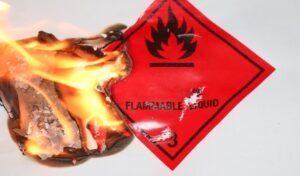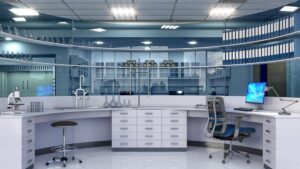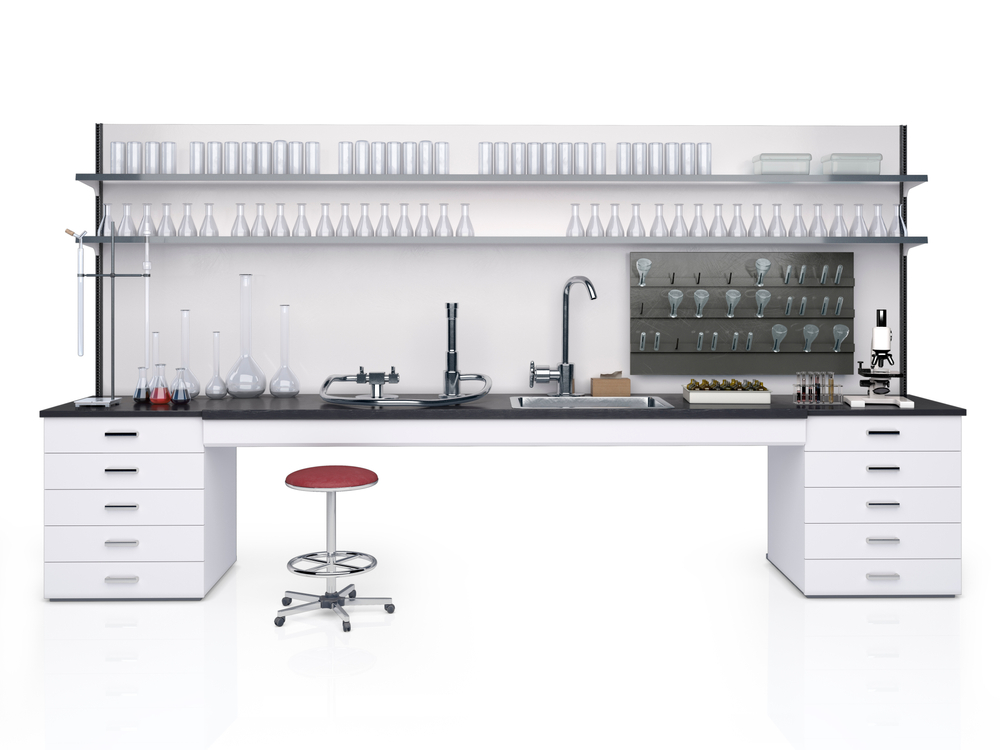
Laboratory cabinets play a crucial role in maintaining a safe and organized work environment in laboratories. When it comes to material selection, metal cabinets such as stainless steel and powder-coated metal are popular choices due to their durability, resistance to corrosion, and ease of maintenance.
However, like any material, metal cabinets have their own set of pros and cons that should be considered when deciding whether to use them in lab settings. In this article, we will explore the advantages and disadvantages of using metal cabinets in laboratory environments, as well as the types of laboratories that would benefit most from their use.
Pros of Using Metal Cabinets in Lab Settings
1. Durability
Metal cabinets, particularly those made of stainless steel, are highly durable and resistant to dents, scratches, and corrosion. This makes them suitable for use in demanding laboratory environments where frequent use and exposure to chemicals or other corrosive substances are common.
2. Hygiene and Cleanliness
Metal cabinets are easy to clean and sanitize, making them ideal for laboratories where cleanliness is crucial. Stainless steel, in particular, has a smooth surface that resists bacterial growth and is easy to wipe down. Stainless-steel cabinetry is also ideal for cleanrooms.
3. Fire Resistance
Some metals, such as stainless steel, have inherent fire-resistant properties, which can be beneficial in laboratories where flammable materials are present.
4. Customization
Metal cabinets can be easily customized to fit specific laboratory requirements, such as the addition of shelves, drawers, or other storage compartments.
5. Aesthetic Appeal
Metal cabinets have a modern and professional appearance, which can enhance the overall look of a laboratory. Powder coating can offer various colors.
Cons of Using Metal Cabinets in Lab Settings
1. Cost
Metal cabinets, especially those made of stainless steel, tend to be more expensive than cabinets made of other materials such as wood or plastic.
2. Weight
Metal cabinets are typically heavier than cabinets made of other materials, which can make them more difficult to move or install.
3. Scratches and Dents
While metal cabinets are durable, they can still be susceptible to scratches and dents, which can detract from their appearance over time.
4. Limited Color Options
Metal cabinets are usually available in a limited range of colors, which may not suit all laboratory aesthetics, except when powder coated metal is used.
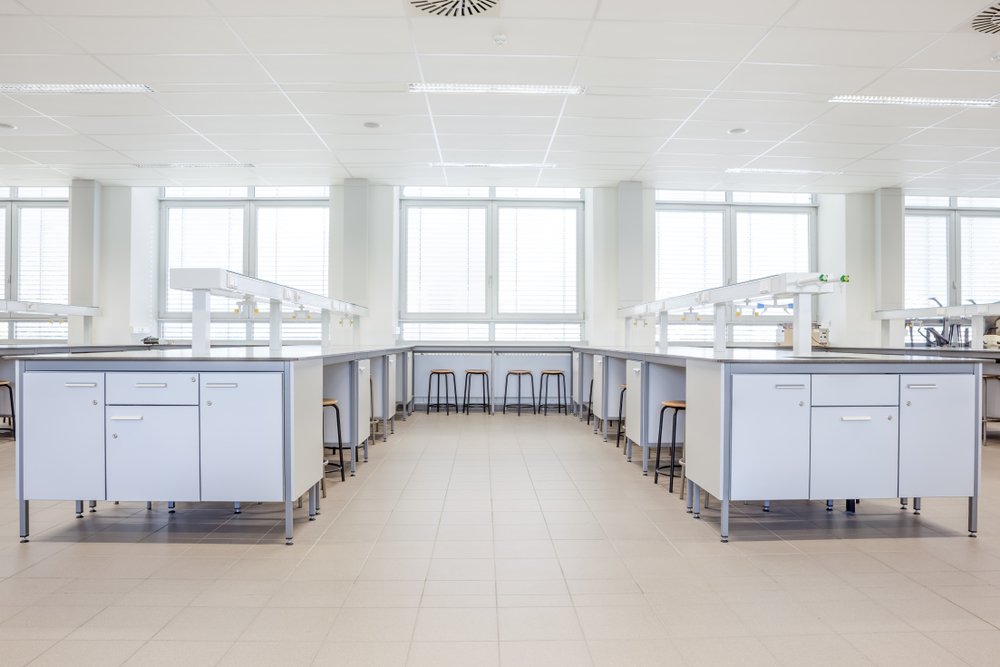
Key Considerations for Selecting Laboratory Cabinets
When selecting laboratory cabinets, several key considerations should be taken into account to ensure they meet the specific needs of the laboratory environment. These considerations include:
— Material
Choose a material that is suitable for the laboratory’s requirements, such as stainless steel, for corrosion resistance and ease of cleaning.
— Construction
Look for cabinets with sturdy construction and reinforced joints to withstand heavy loads and frequent use.
— Storage Needs
Consider the types and sizes of items that need to be stored to determine the cabinet size, number of shelves, and drawer configuration.
— Safety Features
Ensure the cabinets have appropriate safety features, such as locking mechanisms to prevent unauthorized access to hazardous materials.
— Ventilation
For cabinets storing chemicals or other hazardous materials, ensure there is adequate ventilation to prevent the buildup of fumes.
— Compatibility
Ensure the cabinets are compatible with other laboratory equipment and furniture, such as fume hoods and workbenches.
— Regulatory Compliance
Ensure the cabinets comply with relevant safety and regulatory standards, such as SEFA, OSHA and NFPA, for the storage of hazardous materials.
— Durability and Maintenance
Choose cabinets that are durable and easy to maintain, with surfaces that are resistant to corrosion, chemicals, and stains.
— Budget
Consider the budget constraints and select cabinets that offer the best value while meeting the laboratory’s needs.
By carefully considering these factors, you can select laboratory cabinets that are safe, functional, and efficient for your laboratory environment.
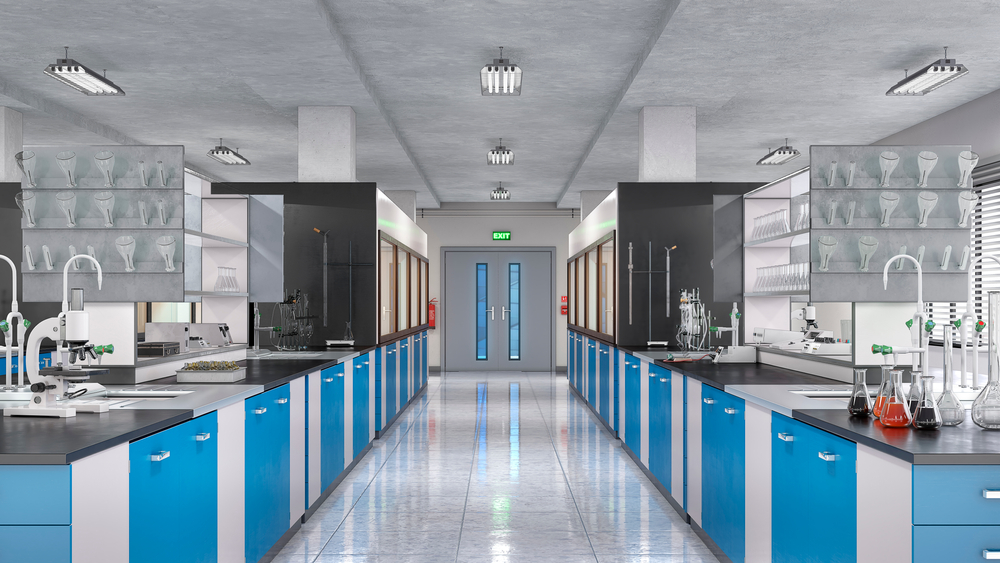
Types of Metals Used for Laboratory Cabinets
Laboratory cabinets are typically constructed using materials that are durable, corrosion-resistant, and easy to clean. Common metals used for laboratory cabinets include:
— Stainless Steel
Highly resistant to corrosion, easy to clean, and durable, stainless steel is a popular choice for laboratory cabinets, especially in environments where cleanliness and hygiene are critical.
— Steel
Regular steel is less resistant to corrosion than stainless steel but can be used for laboratory cabinets with appropriate surface treatments or coatings to enhance its durability.
— Powder-Coated Steel
Regular steel that has been coated with a layer of powder paint, providing both corrosion resistance and a decorative finish.
— Aluminum
Lightweight and corrosion-resistant, aluminum is suitable for laboratory cabinets where weight is a concern or in environments where corrosion is not a significant issue.
— Galvanized Steel
Steel that has been coated with a layer of zinc to improve its corrosion resistance. It is often used for laboratory cabinets in environments where exposure to moisture is a concern.
Each of these metals has its own advantages and is chosen based on factors such as the specific laboratory environment, budget, and desired durability.
Most Frequently Used Metals for Laboratory Cabinets
While the various metals are suitable materials for various reasons, stainless steel and powder coated metal are most frequently the material choice for cabinets in lab settings.
Stainless Steel
Stainless steel is a type of steel alloy that contains a minimum of 10.5% chromium, which gives it its corrosion-resistant properties. The chromium in stainless steel reacts with oxygen to form a thin, invisible layer of chromium oxide on the surface, which protects the steel from corrosion.
There are several grades of stainless steel suitable for laboratory cabinets, workbenches, and other lab casework, with the most common ones being:
- 304 Stainless Steel: This is the most common type of stainless steel used in laboratory cabinets. It is highly corrosion-resistant and suitable for a wide range of laboratory environments. It is also known as “18-8” stainless steel, referring to its composition of 18% chromium and 8% nickel.
- 316 Stainless Steel: This grade of stainless steel contains a higher amount of chromium (16-18%) and nickel (10-14%) than 304 stainless steel, making it even more corrosion-resistant. It is often used in environments where there is exposure to more corrosive chemicals or where sanitation is critical, such as in pharmaceutical or food processing laboratories.
- 430 Stainless Steel: While not as corrosion-resistant as 304 or 316 stainless steel, 430 stainless steel is more economical and still offers good corrosion resistance in less demanding laboratory environments.
The choice of grade depends on the specific requirements of the laboratory, such as the types of chemicals used, the level of cleanliness required, and the budget.
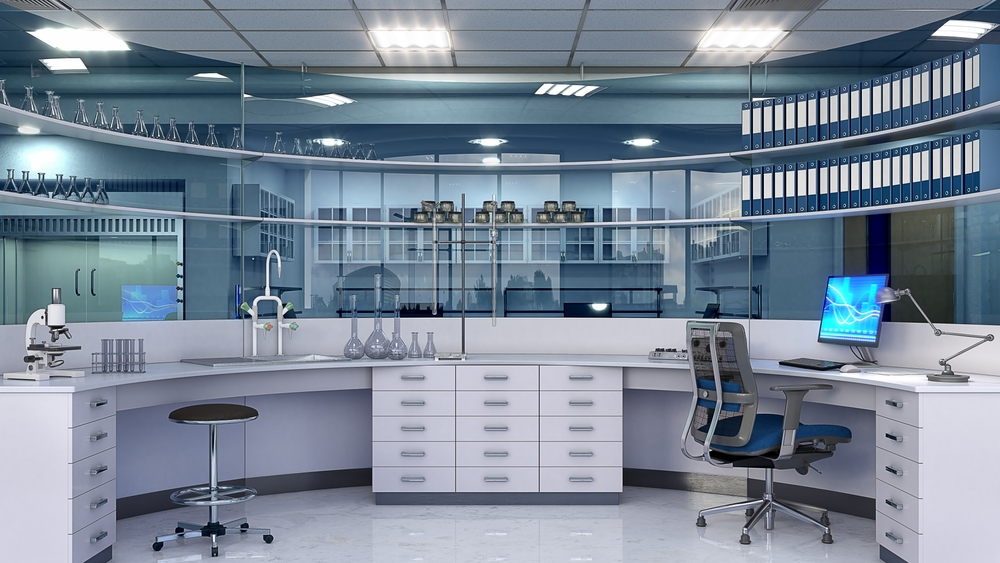
Powder Coated Metal
Powder coating is a type of coating that is applied as a free-flowing, dry powder.
The main components of powder coating are resin, pigment, and sometimes additives. The resin is typically a thermosetting polymer, such as polyester, epoxy, or polyurethane, which gives the powder its adhesive properties and forms the final coating when cured.
The pigment provides color and opacity to the coating, while additives can improve the coating’s properties, such as UV resistance or flow.
The powder coating process involves several steps:
- Preparation of the Surface: The metal surface is cleaned and treated to remove any contaminants and create a surface that is suitable for adhesion.
- Application of the Powder: The powder is electrostatically charged and sprayed onto the surface of the metal, where it adheres due to the electrostatic attraction.
- Curing: The coated metal is then heated in an oven to cure the powder coating. During curing, the powder melts and flows to form a continuous film, which then chemically cross-links to create a hard, durable finish.
Powder coating is known for its durability, resistance to chipping, scratching, and fading, as well as its environmental advantages compared to traditional liquid coatings, as it produces minimal waste and emissions. It is commonly used for coating metal surfaces in various applications, including laboratory cabinets, automotive parts, and outdoor furniture.
While metal cabinets have several advantages, such as durability, cleanliness, and fire resistance, they also come with some drawbacks, including cost and weight. The decision to use metal cabinets in a laboratory setting should be based on careful consideration of these factors and the specific needs of the laboratory. In some cases, laboratory casework has metal frames with epoxy resin, phenolic resin, laminates, or other types of work surfaces.
Related Reading: Why Metal Lab Tables Are a Staple in Any Research Facility
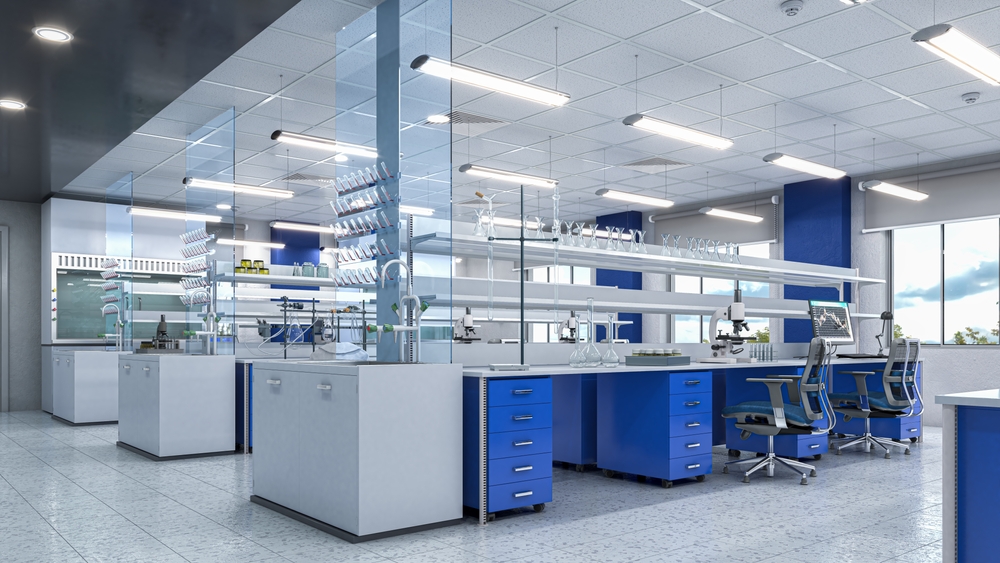
Stainless Steel Vs. Powder Coated Steel for Lab Cabinets
Both stainless steel and powder-coated metal can be suitable for laboratory cabinets, depending on the specific requirements of the laboratory. Here’s how they compare based on the key considerations:
1. Material:
- Stainless steel is highly durable and resistant to corrosion, making it ideal for harsh laboratory environments.
- Powder-coated metal, while not as corrosion-resistant as stainless steel, can still provide good durability and resistance to chipping and scratching.
2. Construction:
- Both materials can be used to construct sturdy cabinets, but stainless steel tends to be more robust and long-lasting for heavy-duty service.
3. Storage Needs:
- Both materials can be used to create cabinets of various sizes and configurations to meet different storage needs.
4. Safety Features:
- Both materials can be designed with locking mechanisms for safety and security.
5. Ventilation:
- Stainless-steel cabinets can be designed with built-in ventilation systems, while powder-coated metal cabinets may require additional ventilation features.
6. Compatibility:
- Both materials can be compatible with other laboratory equipment and furniture.
7. Regulatory Compliance:
- Stainless steel is often preferred for storing hazardous materials due to its corrosion resistance and ease of cleaning, which helps meet regulatory standards.
- Powder-coated metal may require additional precautions or features to ensure compliance with safety standards for hazardous material storage.
8. Durability and Maintenance:
- Stainless steel is known for its longer lifespan, durability, and ease of maintenance, requiring minimal upkeep.
- Powder-coated metal is also durable, but may require more care to prevent chipping and maintain the integrity of the coating.
9. Budget:
- Powder-coated metal cabinets are often more cost-effective than stainless-steel cabinets, making them a more budget-friendly option.
In summary, stainless steel is generally more suitable for laboratory cabinets due to its superior durability, corrosion resistance, and ease of maintenance. However, powder-coated metal can be a viable alternative in environments where cost is a significant factor and where the level of corrosion resistance required is lower.
Related Reading: The Benefits of Metal Benches in a Laboratory Setting
Laboratory Types that use Metal Cabinets
Stainless steel and powder-coated metal cabinets are suitable for a wide range of laboratory types, especially those where cleanliness, durability, moisture resistance, and corrosion resistance are important. Some types of laboratories that would likely use these types of cabinets include:
- Chemical Laboratories: Laboratories that handle corrosive chemicals and reagents typically require cabinets that can withstand chemical exposure and are easy to clean to prevent contamination.
- Biomedical Laboratories: Laboratories conducting research or experiments with biological materials may require cabinets that can be easily sanitized and are resistant to corrosion from biological agents.
- Clinical Laboratories: Laboratories in healthcare settings that analyze patient samples may use stainless steel or powder-coated metal cabinets for storing supplies and equipment due to their durability and ease of cleaning.
- Food and Beverage Laboratories: Laboratories in the food and beverage industry may use stainless-steel cabinets to comply with hygiene standards and ensure the integrity of samples and products.
- Research Laboratories: Laboratories conducting general research may use stainless steel or powder-coated metal cabinets for their durability and versatility in storing various types of equipment and materials.
- Quality Control Laboratories: Laboratories responsible for ensuring the quality of products or materials may use these cabinets to store samples and testing equipment in a controlled environment.
- Educational Laboratories: Laboratories in educational institutions may use these cabinets for storing equipment and supplies used in teaching and research.
In general, any laboratory that requires durable, corrosion-resistant, and easy-to-clean storage solutions is likely to use stainless steel or powder-coated metal cabinets.
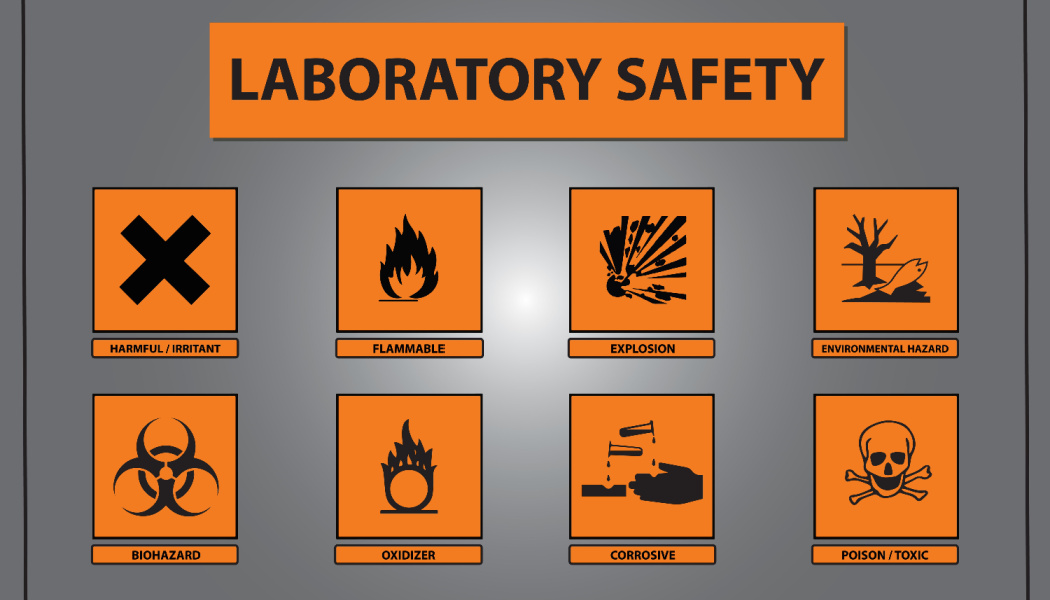
Compliance with Regulations
Compliance with regulations for metal cabinets in a laboratory space is crucial to ensure the safety of laboratory personnel, the environment, and the integrity of research and experiments.
It is crucial to select a high-quality laboratory cabinet provider who maintains high standards, such as the Scientific Equipment and Furniture Association (SEFA). SEFA certification proves that lab furniture is tested for maximum safety, durability, and structural integrity. Furthermore, it ensures that the cabinets will hold up to exposure, chemical resistance, mechanics, and dynamics required in a lab setting.
Regulations include those set by OSHA (Occupational Safety and Health Administration) and NFPA (National Fire Protection Association) provide guidelines for the storage of hazardous materials, including requirements for the construction, materials, and placement of storage cabinets.
Adhering to these regulations helps prevent accidents, such as chemical spills or fires, and ensures that cabinets are suitable for the specific hazards present in the laboratory. Failure to comply with these regulations can result in fines, penalties, and compromised safety standards.
Conclusion
In conclusion, the use of metal cabinets in lab environments offers numerous advantages, including functionality, durability, hygiene, fire resistance, and customization options. However, it’s essential to weigh these benefits against potential drawbacks such as cost, weight, and susceptibility to scratches and dents. Compliance with regulations governing the use of metal cabinets is paramount to ensure the safety and integrity of laboratory operations.
Additionally, seeking the support and guidance of an accredited lab design company can be invaluable in selecting, installing, and maintaining laboratory furniture that meets both regulatory requirements and the specific needs of the laboratory environment. By carefully considering the pros and cons of metal cabinets and investing in expert advice, laboratories can create a safer, more efficient, and productive workspace for scientific research and experimentation.
Ensure safety, durability, and compliance in your lab environment. Explore why metal cabinets offer unparalleled cleanliness and efficiency in lab settings.



